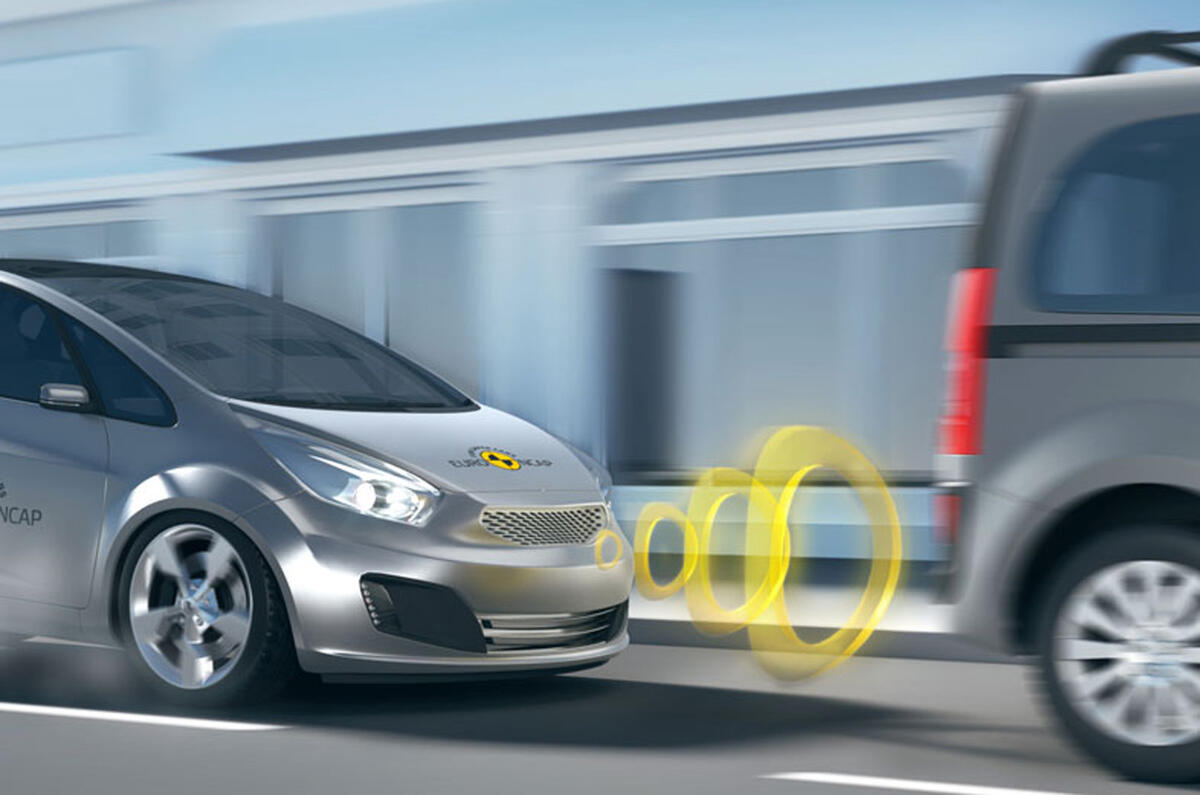Cars sold in the European Union from 2022 onwards will be required to be fitted with a range of new safety systems as standard, including intelligent speed limiters and monitors that can detect when a driver is drowsy or distracted.
The European Commission has approved the legislation, which was proposed last year and provisionally approved last month, in a bid to improve road safety. The legislation is due to come into effect from May 2022 for new models that haven’t been designed yet and May 2024 for new versions of models currently on the market. The measures are subject to the formal approval of the European Parliament and EU member states in September.
The legislation will make it compulsory for new cars to be fitted with intelligent speed assistance (ISA) systems, which can use GPS data and sign-recognition cameras to advise drivers of speed limits and, unless overridden, can limit the speed of the vehicle as needed, by way of reducing engine power. Cars will also need to be fitted with an alcohol interlock system, in an attempt to prevent drunk driving.
Distraction monitors will use cameras that can detect when a driver is impaired, tired or not paying attention, and then prompt them to react. Volvo recently announced that it would fit such systems on its vehicles as standard.
The safety features that will become mandatory in passenger cars are:
- Advanced automatic emergency braking systems
- Lane departure warning systems
- Intelligent speed assistance
- Alcohol interlock installation facilitation
- Driver drowsiness and attention warning
- Advanced driver distraction warning
- Emergency stop signal
- Reversing cameras or detectors
- Accident data recorder
Several of the systems, including AEB, are already widely available and standard on many models, in part because they are now required for a car to score the maximum five stars in the Euro NCAP safety tests.
The European Commission estimates that the measures will save more than 25,000 lives by 2038. Under the new rules, manufacturers will have to ensure the systems are developed in a way that ensures “users accept them”.
Antonio Avenoso, executive director of the European Transport Safety Council, said: “There have only been a handful of moments in the last 50 years which could be described as big leaps forward for road safety in Europe.










Join the debate
Add your comment
A bit of paper with a picture
A bit of paper with a picture of a '90' sign on it taped over the front sign reading camera should do it. The system also uses GPS map data but I would think a sign reading speed overides that data as the map data could be out of date.
Personally, in any built-up
Personally, in any built-up area I'm all for it.
I used to think this kind of idea was draconian, but having kids now and seeing how many total bell-ends flout 20 and 30mph limits, i really think we've bought it on ourselves.
Austerity hasn't helped - hardly see a cop any more, and people are unfortunately all too keen to take advantage of this. They basically know they probably won't get caught.
I hope that soon all cars will be banned from residential areas: we will have to rebuild infrastructure and get (good) public transport to out of toen hubs where we rent/use our electric cars.
michael knight wrote:
So it only bothered you when you didn't have kids. But now do have do you stick to limits.
Obviously other children were fair game to you.
I can see the argument for
Will any car make it through an MOT ever again
My experience is more sensors = more trouble and cost and I’m talking on £80k cars, putting this tech in lower end cars will be a disaster.
But safety they cry, well it’s now proven the 20mph speed limits make no difference as bell end pedestrians just step out thinking they’re immortal, not looking up from their mobile phones
The real problems include HGVs which are involved in half of all fatalities and also a lack of cycle lanes
Yep the nanny state doesn’t mind if obesity brings the NHS to its knees, they should be putting controls on people’s food intake not control of movement if they want to save lives
if only I could stamp on BRAKE